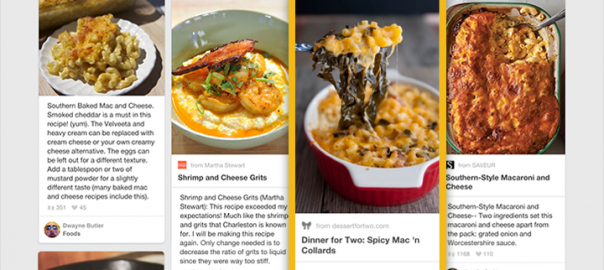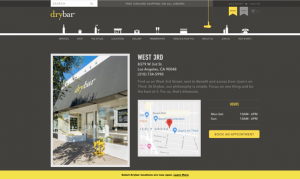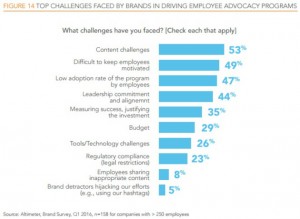In the early days of social, it was the brand’s job to determine what products to promote, what content to create and what messaging to share. Whether publishing a line of text, an elaborate image or an experiential video, the goal was the same: to get your content in front of potential customers. And you did this by publishing it to, or promoting it within, the social feed.
From there, you crossed your fingers, tossed some salt over your shoulder and hoped that your content was compelling enough to attract a “Like” or a comment – or, better yet, a click or an earned share.
The feed, however, is no longer the epicenter of social activity. Today’s consumer looks to communities like Facebook and Twitter, as well as those that are oriented toward images, such as Pinterest, Tumblr and even Instagram, not only to passively scroll but to actively search – for products, ideas, topics, events, headlines and other content that answers questions, provides insight and adds value.
This shift in behavior becomes even more important when you consider how quickly these channels—particularly those that are anchored by images—are growing. According to a May 2015 survey from GlobalWebIndex, of the largest social platforms in the world, Pinterest, Tumblr and Instagram have seen the highest growth in active users over the last year.
Not coincidentally, all three of these platforms have made significant changes during this period that make it easier for consumers to find content that matters to them. As social and search become increasingly entwined, here’s what you need to know – and how you can optimize your own strategy in response.
Pinterest: Guiding consumers through the search process.
Leading the charge is Pinterest, a channel that has become synonymous not only with pinning and planning but also purchasing. The addition of Buyable Pins will likely accelerate this trend, too.

Pinterest’s foray into search began around April of last year with the launch of Guided Search. An interactive feature, Guided Search allows pinners to start with a broad search term (such as “dinner”) and to narrow in on something specific and actionable (like “southern dinner recipes for two”).
Since enabling Guided Search, Pinterest has reported a 30% uptick in search queries.
This is a tremendous leap and marks a big change in the way that consumers are using the site.
Applications
Guided Search is here to stay, so you’ll want to adjust your Pinterest strategy for it. How? First, by making sure that your products are available on Pinterest. Then, by optimizing those product pins for discovery. Here are a couple of quick ways to spruce up your Pinterest content now:
1. Write detailed pin descriptions. Pinterest allows you to caption your pins with up to 500 characters. Fill this space with copy that speaks not only to what your product is but also how consumers might use it. Be direct. Be descriptive. And consider how to incorporate keywords that create contextual relevance and drive action.

2. Enrich your pins with important details. Pinterest’s Rich Pins enable brands to reinforce images with important details that drive action. With Product Pins, for example, brands can alert pinners when the price of a product has dropped, in addition to displaying real-time availability.

Other types of Rich Pins include App Pins, Recipe Pins, Place Pins, Article Pins and Movie Pins.
Publishers are seeing the significance of article pins, particularly when it comes to evergreen content. For instance, since upgrading their photos on site last year, and improving pinnability, About.com has reported a 30% uptick in pageviews. (Fun fact: Their most popular article is How to Make a Bouncing Polymer Ball.)
Tumblr: Graduating from tag- to full-text search.
Tumblr tags serve their purpose; on a blog, it’s useful to be able to search by categorical terms when looking for content. The problem? Tags can be somewhat subjective. One person’s jeans are another person’s denim (and still another person’s jorts). What’s a Tumblr user to do?
In a bid to expand the search functionality of its platform, Tumblr recently announced three major improvements to the way its users search for content on blogs. They are as follows:

Applications
Maintain culturally-relevant messaging, and incorporate key terms that your audience is likely to search for into your captions. Be mindful of the typical Tumblr user; the platform overindexes more than any other for teens and young millennials. To that end, Tumblr’s audience reacts well to positivity, humor, creativity and transparency, so no matter how you caption your content, use language that’s both uplifting and authentic.
Instagram: Making it easier to explore timely content in the moment.
While still in the works, Instagram has begun to consider how search will factor into its future too. The platform’s search functionality has so far lagged behind, however Instagram co-founder Mike Krieger recently mentioned in an interview with WIRED that major improvements to its search tab are on the horizon.
Much like Facebook and Twitter, Instagram is seeking to enable its users to get access to relevant information regarding timely events – visually. If Twitter is where people go to get information about, and find commentary on, things that are happening around the globe, Instagram wants to be the place where stories are cemented through imagery.
All it takes is a single poignant photo to draw a user into another world. Leverage that emotion.
Here’s an example from a search I did last week.

In Philadelphia—home of Curalate’s HQ—there was this awesome art exhibit (re: also a beer garden) called “Future Sensations.” It was sponsored by Saint-Gobain, the world’s largest building materials company. Before deciding whether to go, I used Instagram to determine what it was all about, what the experience looked like and whether it was worth my time. With Instagram, I pulled up an extensive collection of more than 5K photos shared by fellow Philadelphians. They were completely mesmerizing. I knew I needed to go.
The same search on Twitter, as you can see above, was slightly less than convincing.
Applications
Consider how to execute a visual strategy that’s timely and relevant, and use hashtags to make it easier for people to find your images. Did you know that emojis can now be tracked with hashtags on Instagram too? More than anything though, maintain Instagram’s authentic vibe.
Don’t tap into a topic of conversation unless you have something valuable to contribute.
If nothing else, Instagram users can smell a lie from a mile away. Stick to brand-appropriate topics, and make every image count.
(180)






